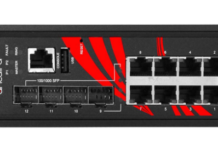
In the intricate world of modern machinery and electronics, there’s one component that quietly ensures everything stays connected and functional—the wire harness. Often hidden beneath dashboards, inside machinery, or along factory walls, wire harnesses are the nervous system of electrical systems. They organize, protect, and channel the complex network of electrical wires that power everything from automobiles and aircraft to medical devices and industrial equipment.
As industries embrace smarter, lighter, and more electrified solutions, the global wire harness market is expanding rapidly—both in scope and in significance.
Why Wire Harnesses Matter More Than Ever
At its core, a wire harness is an assembly of electrical cables or wires that transmit signals or power. But it’s not just about bundling wires—it’s about increasing efficiency, safety, and performance in electrical systems. Wire harnesses make manufacturing easier, reduce installation time, protect wires from environmental hazards, and ensure systems operate without interference or failure.
From electric vehicles and aircraft to data centers and surgical robots, the demand for reliable, durable, and compact wiring systems is growing at an unprecedented pace.
Market Outlook: Growth Fueled by Electrification and Automation
Global Wire Harness Market Outlook 2034
The global industry was valued at US$ 88.2 billion in 2023. It is estimated to grow at a CAGR of 5.9% from 2024 to 2034 and reach US$ 165.2 billion by the end of 2034.
This strong growth is being driven by several megatrends—most notably the global push for electric mobility, industrial automation, smart homes, and connected devices. With every advancement in these areas comes an increased need for high-performance wire harnesses that can handle greater power densities, tighter spaces, and more complex signal routing.
Key Market Drivers
1. Electrification of Vehicles
Electric vehicles (EVs) are revolutionizing the automotive industry. Unlike internal combustion engine (ICE) vehicles, EVs require more wiring and more sophisticated electrical systems. This translates into greater demand for wire harnesses, especially high-voltage variants that can manage heavy power loads.
Automakers are not just electrifying; they’re also pushing for lighter and more compact designs to extend battery range. This is fueling innovation in lightweight, modular, and high-efficiency wire harnesses that reduce weight without sacrificing performance.
2. Industrial Automation and Robotics
As factories evolve into smart, interconnected ecosystems, wire harnesses are becoming critical in facilitating communication between sensors, actuators, controllers, and power supplies. Precision-engineered harnesses are needed to withstand high temperatures, vibrations, and repetitive movement—especially in robotic arms and automated assembly lines.
3. Aviation and Aerospace Advancements
The aerospace industry demands the highest levels of safety and reliability. Wire harnesses in aircraft must endure extreme conditions and be exceptionally lightweight. As next-gen aircraft and drones become more common, the demand for customized and rugged wire harness solutions is rising significantly.
4. Consumer Electronics and Smart Devices
Whether it’s a smart refrigerator, wearable device, or a cloud-connected camera, today’s electronics are more compact and power-dense than ever. Wire harnesses in this space must be both miniaturized and efficient—allowing for the seamless integration of power and data transmission in tight spaces.
Trends Reshaping the Market
• Miniaturization and High-Density Harnesses
Devices are getting smaller, yet their functionality is increasing. This has led to the development of wire harnesses that can accommodate multiple signals in a compact space, using fine-gauge wires and advanced insulation materials.
• Sustainability and Recyclable Materials
Wire harness manufacturers are now prioritizing eco-friendly materials and manufacturing processes. As environmental regulations tighten and consumer awareness grows, sustainable practices are becoming a key differentiator in the market.
• Digital Twinning and 3D Modeling
Using digital twin technology, manufacturers can simulate and test wire harness designs in a virtual environment. This reduces time to market, minimizes errors, and allows for more efficient customization for end-user applications.
• Modular and Customizable Solutions
Industries increasingly require wire harnesses tailored to specific designs and functionalities. Modular designs allow for plug-and-play capabilities, especially in sectors like aerospace, defense, and high-end automotive, where precision and ease of maintenance are paramount.
Challenges in the Wire Harness Industry
Despite its promising outlook, the wire harness market faces several challenges:
- Supply Chain Disruptions: The global shortage of semiconductors and raw materials like copper and polymers has strained production schedules and raised costs.
- Labor-Intensive Production: Even today, wire harness assembly is labor-intensive, particularly for complex designs. This limits scalability and creates bottlenecks during periods of high demand.
- Design Complexity: As electrical systems become more advanced, wire harnesses must accommodate a wider range of voltage, signal integrity, and EMI shielding requirements—making design and testing increasingly complex.
Competitive Landscape: Market Leaders and Innovators
The global wire harness market is competitive, with several leading players driving advancements in quality, performance, and sustainability.
Sumitomo Electric Industries, Ltd, Samvardhana Motherson International Limited, Aptiv Plc, Yazaki Corporation, Kromberg & Schubert, Draexlmaier Group, Lear Corporation, LEONI AG, Amphenol, and TE Connectivity are the prominent wire harness market manufacturers.
These companies are setting benchmarks through R&D investments, strategic collaborations, and vertical integration. For example, TE Connectivity and Amphenol are pushing boundaries in connector technology and harness systems for autonomous vehicles and industrial IoT. Similarly, Yazaki and LEONI are heavily involved in developing high-voltage EV harness solutions with integrated thermal management systems.
Regional Insights: Where the Demand Is Rising
Asia Pacific: Leading the Charge
Asia Pacific dominates the wire harness market, with China, Japan, South Korea, and India playing major roles. The region’s dominance stems from its large-scale automotive production, rapidly growing electronics manufacturing sector, and favorable government policies supporting electric mobility and infrastructure development.
Europe: Focused on High-End Applications
European manufacturers are investing in high-performance wire harnesses for luxury vehicles, renewable energy systems, and aerospace. Strict regulations around vehicle emissions and e-waste are pushing European firms toward more sustainable harness solutions.
North America: Innovation Hub
The U.S. and Canada are investing heavily in automation, defense, and smart grid infrastructure—driving the need for advanced wire harness technologies. The region is also a leader in R&D for autonomous vehicles, which require complex wiring systems for sensors, processors, and power distribution.
Investment Opportunities and Future Outlook
The next decade will see substantial investment opportunities in:
- Electric mobility infrastructure
- Data centers and cloud infrastructure
- Smart grid and renewable energy
- Next-generation aerospace programs
- Healthcare and surgical robotics
Companies that can deliver high-reliability, lightweight, and digitally enabled wire harness solutions will stand out in this increasingly competitive market.
Why This Market Report Matters
As industries across the globe strive to become more connected, efficient, and sustainable, wire harnesses are emerging as vital components of innovation. This market isn’t just about cables and connectors—it’s about enabling smarter, safer, and more efficient systems.
Understanding the evolution of wire harness technologies, market dynamics, and regional shifts allows businesses and investors to make informed decisions in a highly technical but foundational industry.
Final Thoughts: Behind Every Innovation, There’s a Connection
Wire harnesses may not make headlines, but they are at the heart of every technological leap—from electric vehicles to space exploration. They ensure power flows where it’s needed, signals stay clear, and systems operate with precision.
As the world becomes increasingly electrified and interconnected, the global wire harness market will continue to play a vital role. Whether you’re an engineer, manufacturer, or investor, keeping an eye on this often-overlooked industry could be your smartest move yet.

















